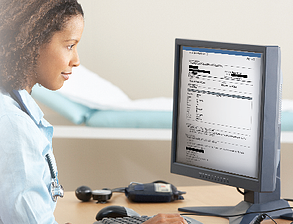There’s been a lot of news lately about the 2015 NIH budget being flat, worrying researchers that the funding pinch will have a significant impact on current and future projects. Even Nobel prize winning researcher Craig Mello from the University of Massachusetts Medical School recently commented on the impact this could have on his ongoing work, noting that if he couldn’t get a grant he’s applied for he may have to reduce staff.
Doing more with less. We are hearing it all the time now.
Though it appears that with the great strides genomic research has provided we are on the cusp of a cure for cancer and other infectious diseases, the hurdles are getting higher because of the funding cuts.
On the other side of the coin is the current process of reviewing available data. Based on the growing volume of information that is available in medical records owing to the rise in use of EHR’s and connected medical devices, there is an ever-increasing pile of data to review. Research teams spend most of their time gathering and compiling data instead of interpreting information and finding opportunities for improving patient care.
The point could be raised that the increased collaboration between university medical center research programs and industry is a result of diminishing available funds. There are many positives to this kind of collaboration, but it may also raise the specter of researchers being able to maintain objectivity (for example, if the sponsor is a pharmaceutical house or medical device company). Also, it potentially creates the “Who really owns the data?” conundrum. And lastly, though a Business Associate Agreement would likely be in place, there’s the added dimension of data security. It’s outside the walls of the institution now and HIPAA, Safe Harbor and Payment Card Industry’s Data Security Standard (PCI DSS) regulations apply.
I submit that one way to alleviate all of the above and keep a lid on costs is by employing automated redaction whenever possible. The PHI in the record cannot be traced back to an individual, the record is safe to transmit to adjudicators and collaborators and the labor savings to research staff to create the redactions is significant. Whether the medical records are paper-based, electronic, or a hybrid, a software redaction tool using a rules engine can automatically identify all fields, present them for verification and completely and tightly redact them for export to collaborating researchers.
In the end, it’s protecting the integrity of the data and it allows researchers to make that data available much more quickly for potential improvements to patient outcomes. And you’re able to have your research team interpreting data, not reading an entire record and scrubbing each field with a Sharpie™ or rubber banding it with a manual software tool.
Would you like to see it in action?